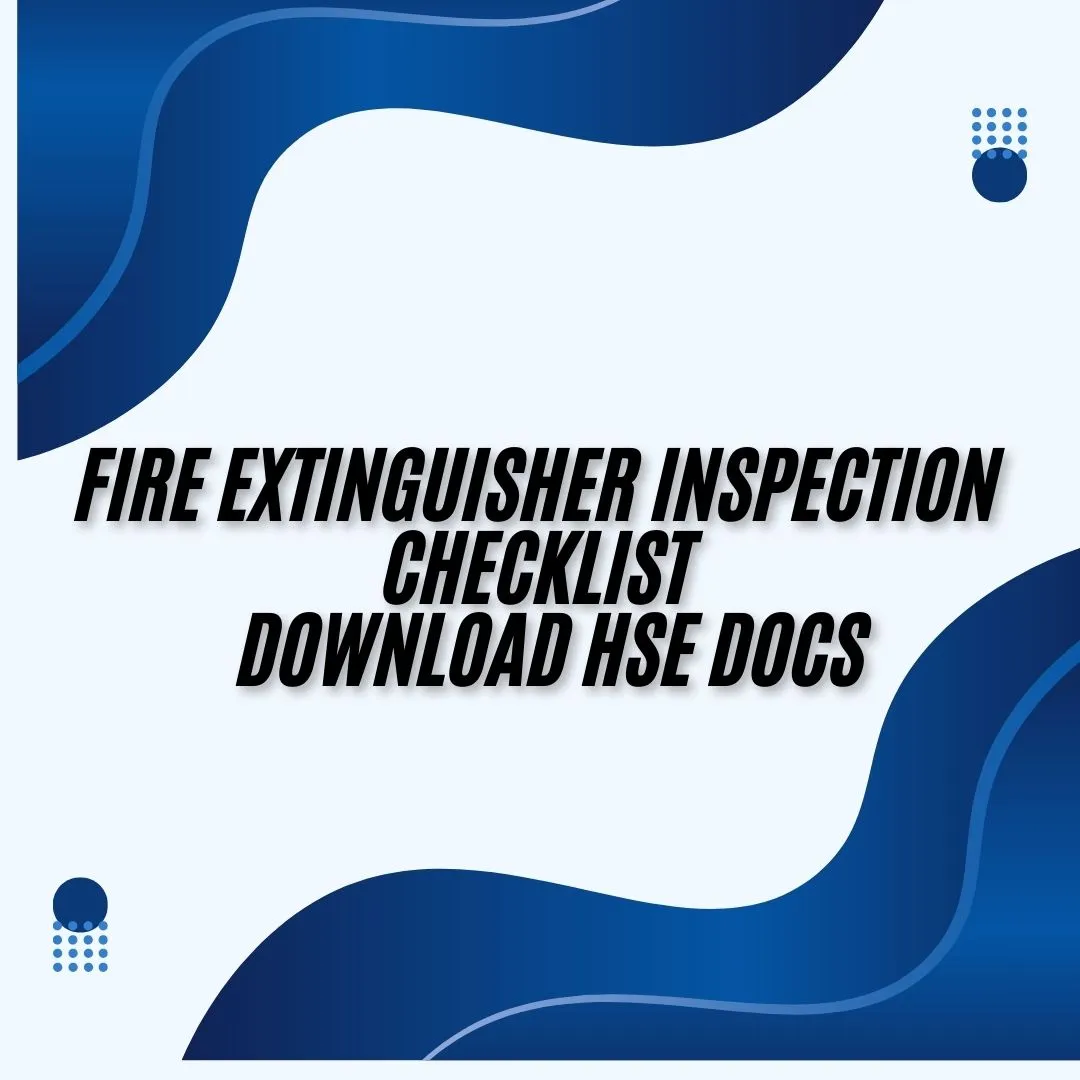Occupational fire safety depends critically on fire extinguishers. Installing them alone is insufficient; they require routine testing and maintenance to ensure their proper operation during an emergency. Safety experts can keep a fire-safe atmosphere and follow regulatory criteria by means of a fire extinguisher inspection checklist.
Why is Fire Extinguisher Inspection Important?
Frequent fire extinguisher checks support:
- ✅ OSHA, NFPA, and local fire codes, ensuring operational readiness in case of fire events.
- ✅ Ensuring fire extinguishers’ life.
- ✅ Finding leaks, damages, or blockages before they become major problems.
What Are the 4 Steps in Inspecting a Fire Extinguisher?
To ensure compliance and safety during a fire extinguisher inspection, take the following four steps:
1. Check the Accessibility
- Remove any objects that impede access.
- Ensure the extinguisher is installed at the correct height per NFPA guidelines.
2. Examine the Physical Condition
- Examine the extinguisher body for dents, rust, corrosion, or leaks.
- Inspect the hose and nozzle for cracks or clogs.
- Check the draw pin and tamper seal.
3. Verify the Pressure Gauge
- The needle should fall into the green zone—that is, the ideal pressure.
- If the extinguisher is in the red zone, it could be over-pressurized or under-pressurized, requiring service.
4. Check the Inspection Tag and Documentation
- Check the inspection tag for the most recent inspection date.
- Follow the required inspection frequency (monthly or annual).
- Use an MS Word checklist to document fire extinguisher inspection findings for easy record-keeping.
What is the NFPA Standard for Fire Extinguisher Inspections?
The National Fire Protection Association (NFPA) covers fire extinguisher inspections in Standard 10. Standard 10 of the National Fire Protection Association (NFPA) stipulates the following requirements:
- Visual checks for accessibility, physical damage, and pressure gauge readings will help you with monthly inspections.
- Every registered fire safety professional has to check the extinguisher once a year for a more thorough assessment.
- Depending on the type of extinguisher, required every five to twelve years to guarantee cylinder integrity is hydrostatic testing.
- Following the NFPA 10 standard, every fire extinguisher in use satisfies occupational safety criteria and is functioning.
Download Fire Extinguisher Inspection Checklist in MS Word
Using a fire extinguisher inspection checklist in a Microsoft Word form can help you simplify inspections. This lets safety teams:
- Create checklists tailored to certain workplace requirements.
- For compliance audits, keep either digital or printed records.
- Track and easily change inspection schedules.
A well-maintained fire extinguisher inspection checklist guarantees fire extinguishers are ready for an emergency and helps companies remain compliant with safety standards. Following NFPA 10 guidelines and the four inspection procedures helps improve fire safety and stop possible threats.

